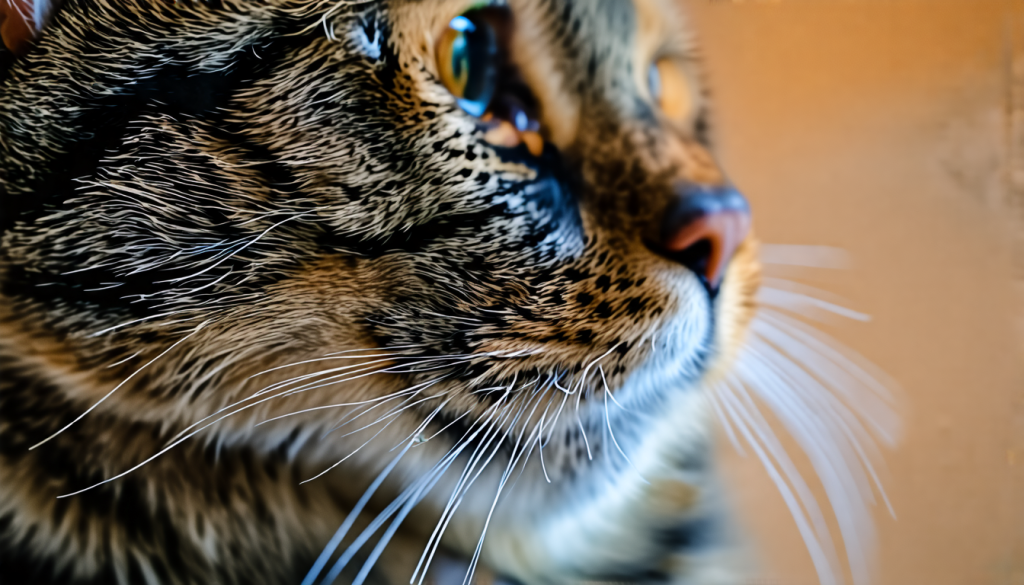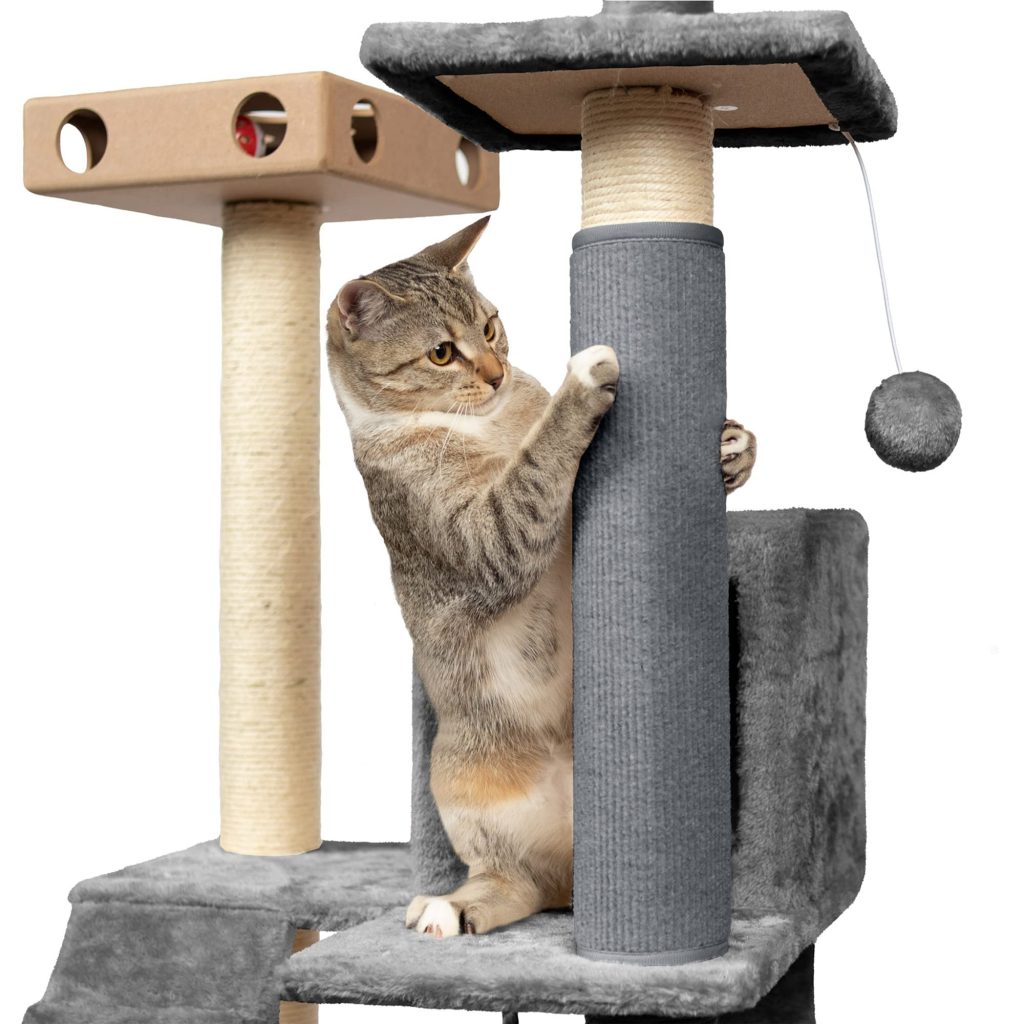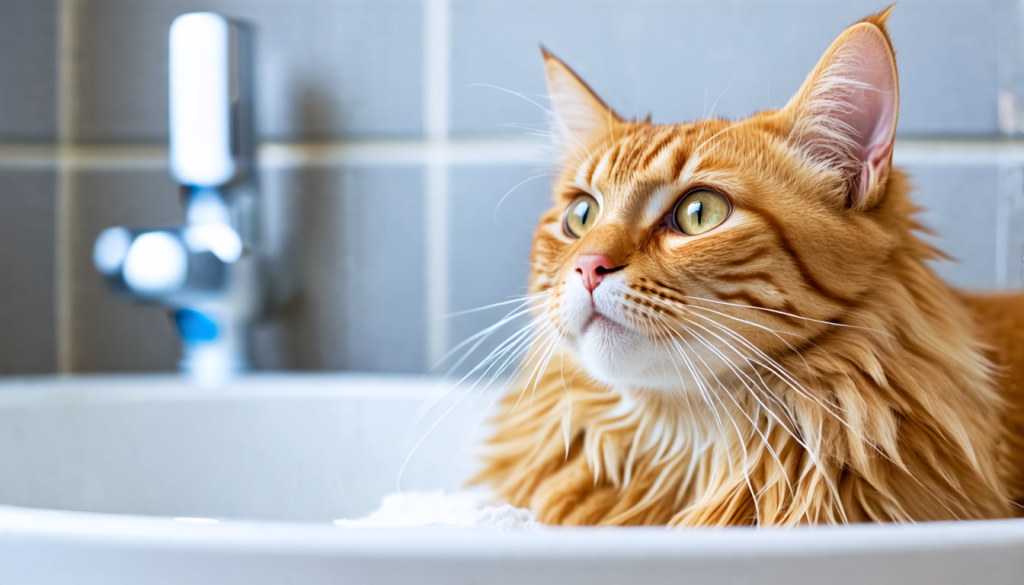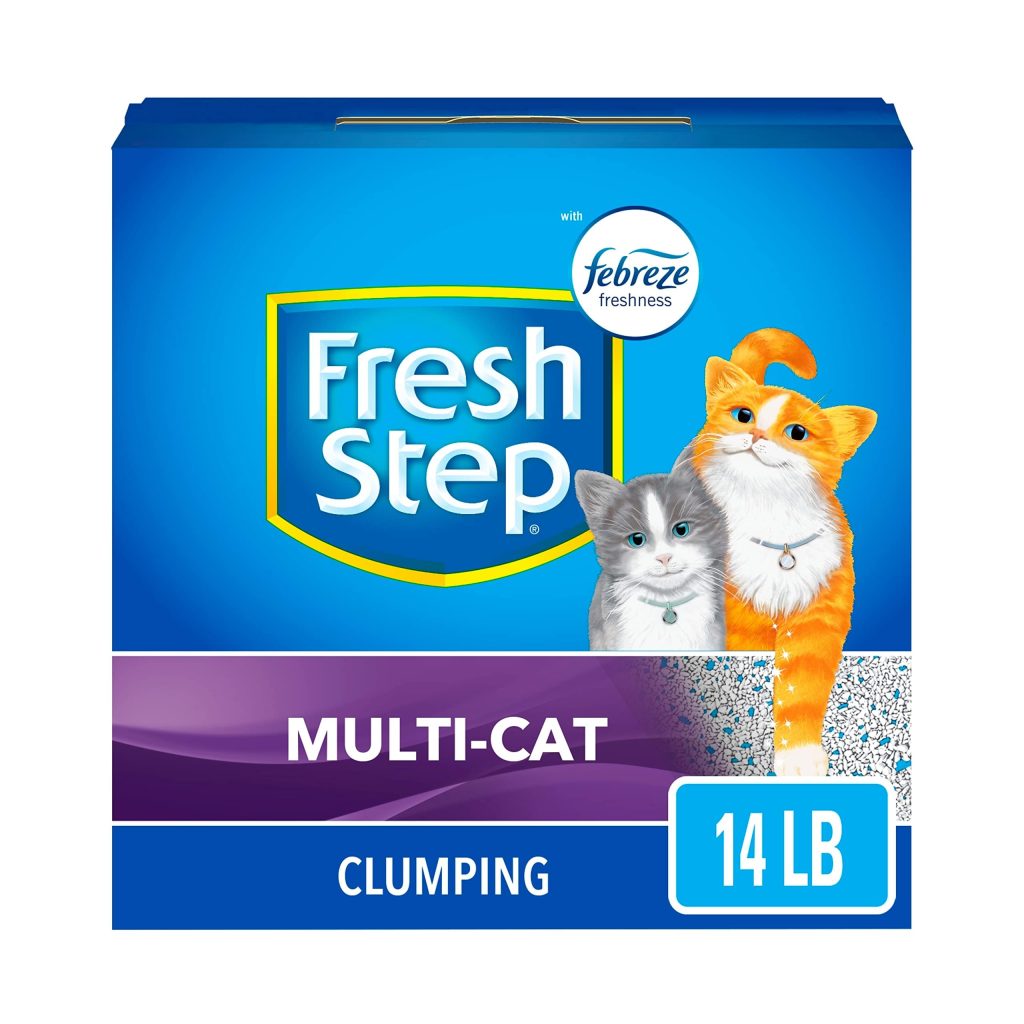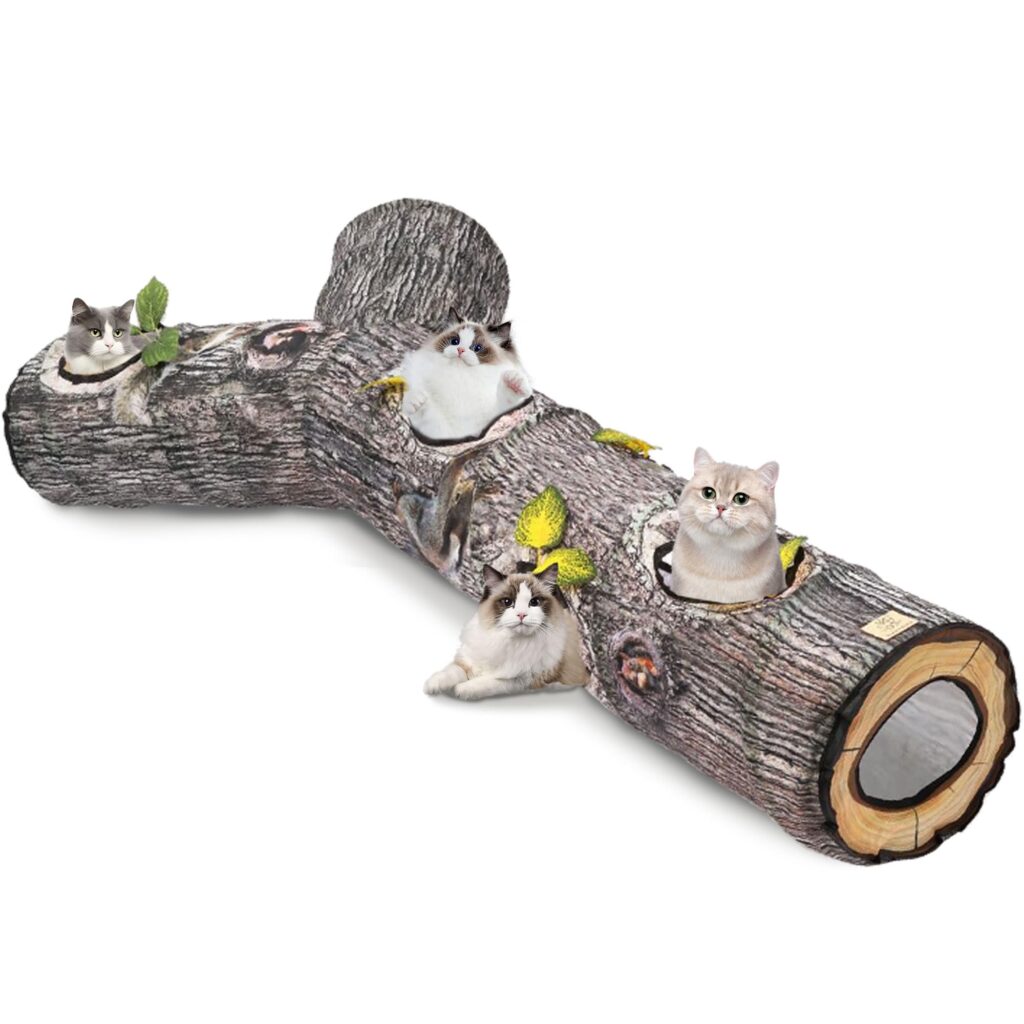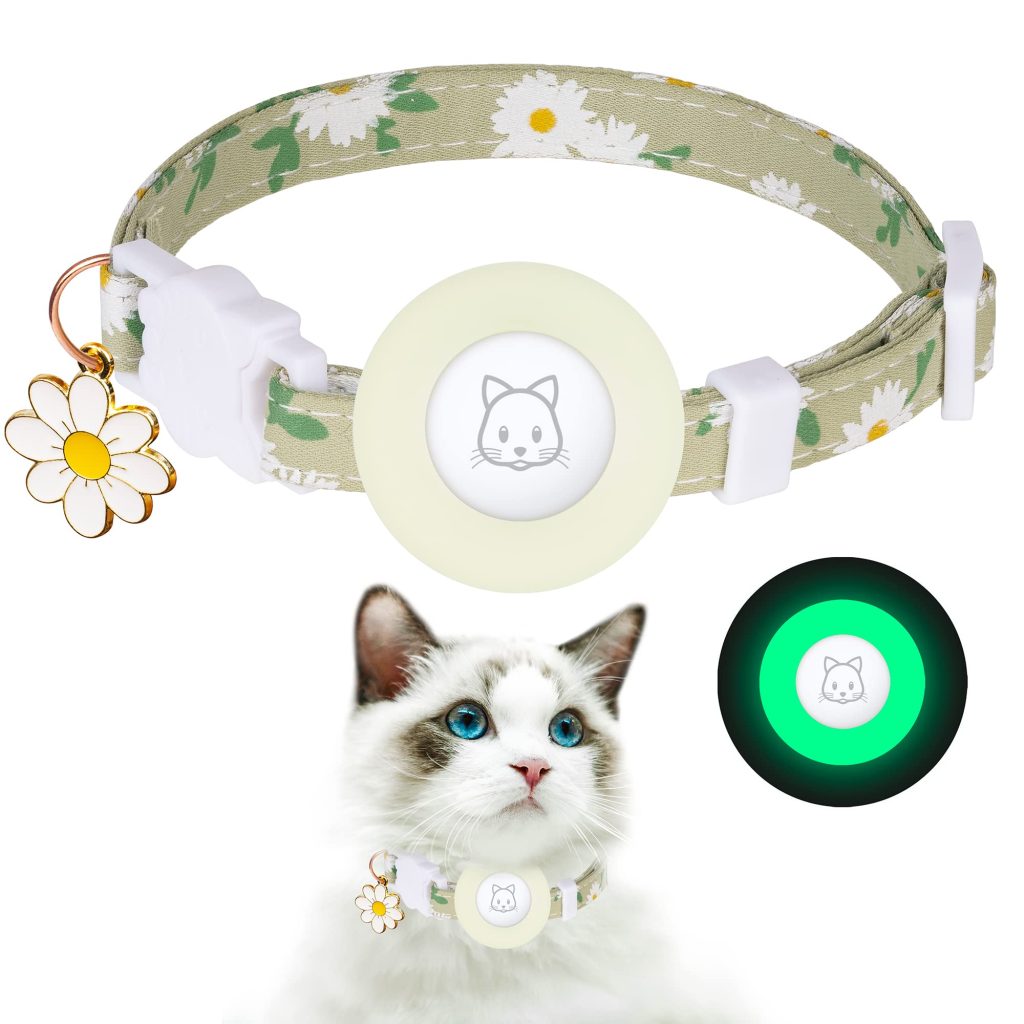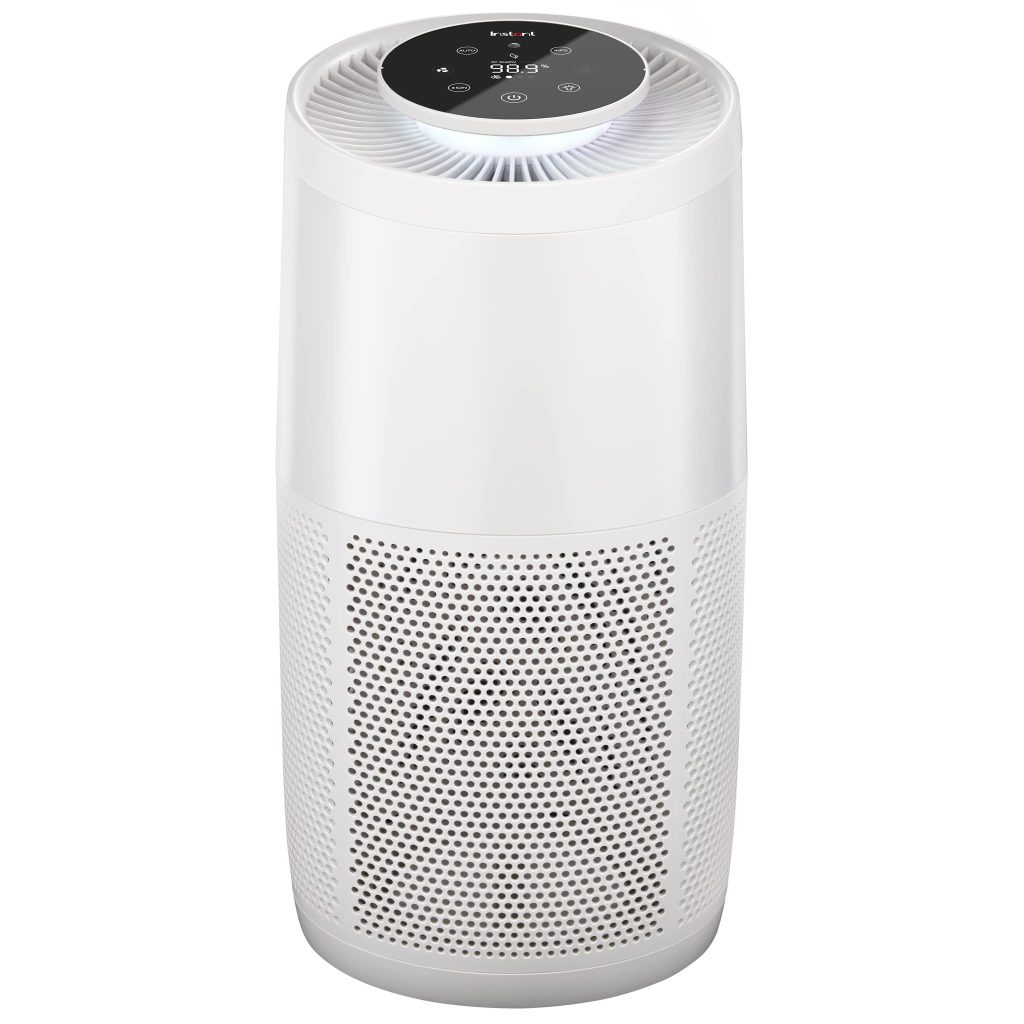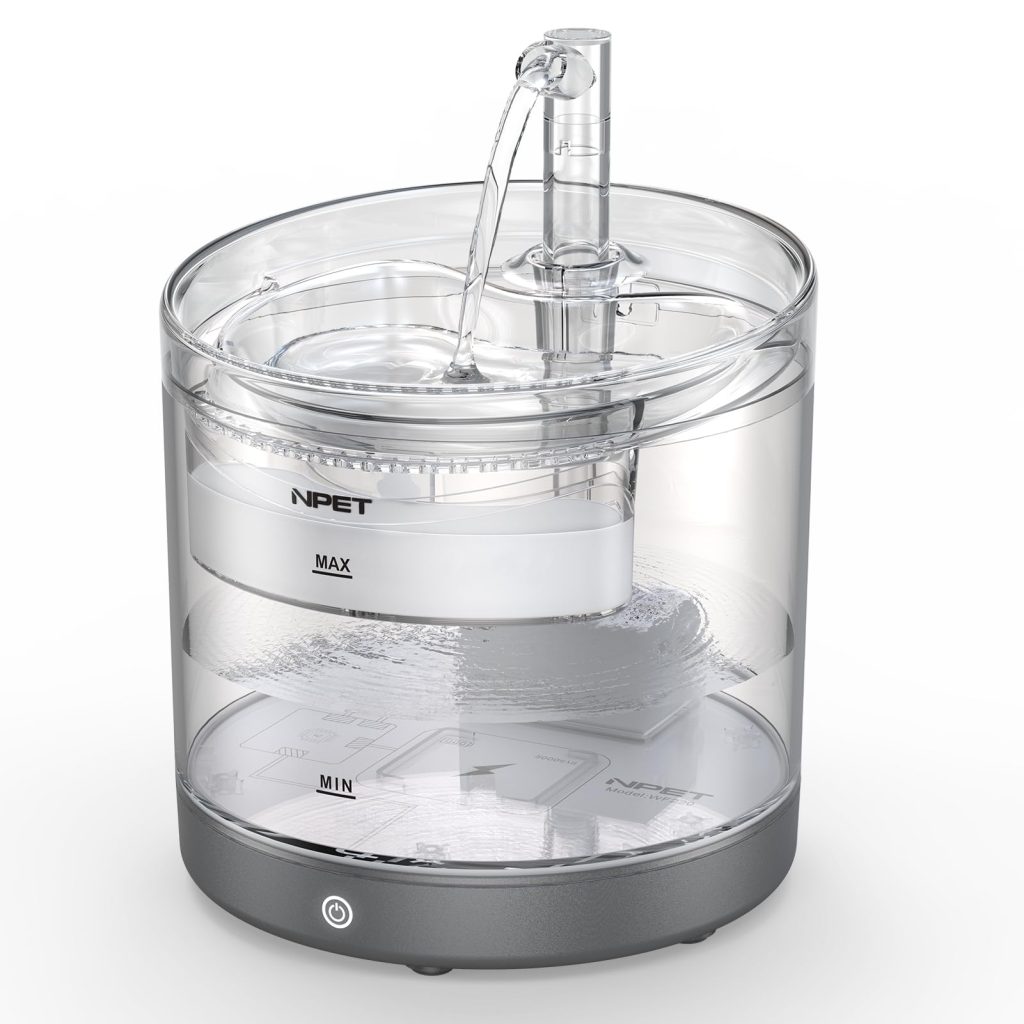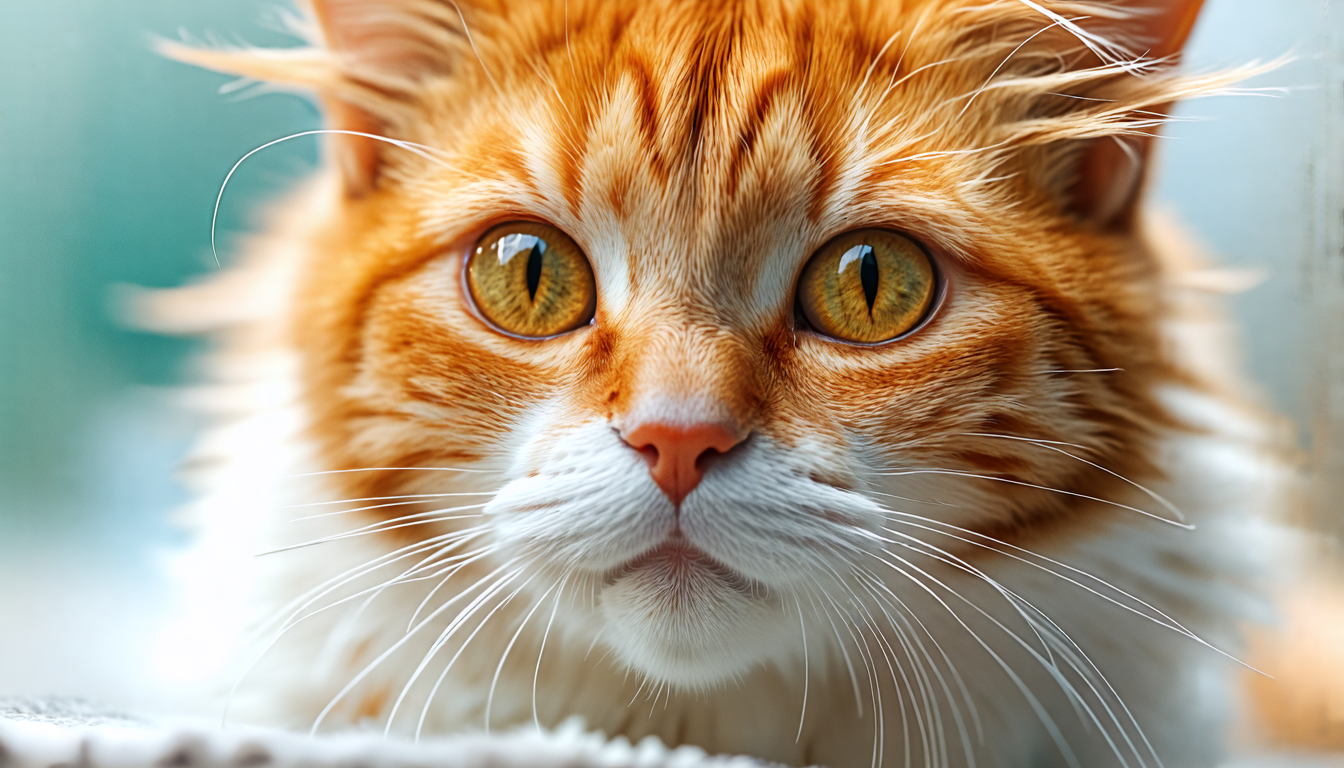
Originating in the mountainous regions of Washington State, the Pixie-bob cat breed has an intriguing history interwoven with tales of wild cats and domestic companions. Despite being relatively contemporary, with their recognition commencing in the early 1980s, the lineage of these captivating felines can be traced back to intriguing mixtures of local bobcat hybrids and established domestic breeds. This unique blend not only showcases their distinctive physical attributes but also contributes to their charismatic personalities.
The breed’s creator, Carol Ann Brewer, is credited with propagating the Pixie-bob’s characteristic features, which she envisioned as a compact, muscular cat that resembled a wild bobcat while maintaining the tranquil disposition found in domestic companions. The result is a breed marked by striking looks, highlighted by a tufted tail reminiscent of their wild ancestors and sturdy, dense coats that come in a variety of colors and patterns.
Pixie-bobs are not just distinguished by their appearance but also by an engaging history rooted in a pioneering effort to bring forth a unique breed that encapsulates both the wild and the gentle. Interestingly, many Pixie-bob enthusiasts regard the cats as living art pieces, exemplifying a balance between beauty and grace, wildness and warmth. The early breeding choices focused on developing not only the striking physical traits but also a temperament that would make the Pixie-bob a cherished family member. This deliberate blending of traits has resulted in a breed well-suited for companionship, making them a popular choice among cat aficionados who appreciate their unique allure.
This breed has garnered admiration for its robustness and delightful demeanor, described in various cat enthusiast circles as playful yet laid-back, possessing an innate intelligence that allows them to form strong bonds with their human counterparts. Their history is not merely one of evolution but also of human devotion and meticulous breeding practices aimed at preserving the essential qualities that define the Pixie-bob today.
As interest in the Pixie-bob cat breed grew, so did the desire for formal recognition. In time, organizations such as The International Cat Association (TICA) acknowledged this breed, officially categorizing it within the realm of recognized breeds. This endorsement helped cement the Pixie-bob’s standing among other domestic breeds and contributed to a growing community of dedicated enthusiasts and responsible breeders intent on nurturing the breed’s unique characteristics.
Looking ahead, the future of the Pixie-bob appears bright, with passionate breeders committed to fostering the lineage while ensuring the well-rounded health, temperament, and appearance that this breed is celebrated for. Their fascinating history is a testament to the lengths that individuals and communities will go to preserve and cultivate a breed that encompasses the spirit of both the wild and the tame.
Physical characteristics
Physical characteristics of the Pixie-bob cat breed are remarkably striking, offering a captivating combination that mirrors both their wild ancestry and domestic sensibilities. Overall, they exhibit a muscular build, characterized by a broad chest and strong legs that contribute to their athleticism. Their medium-sized bodies typically range from 8 to 17 pounds, with males generally larger than females. Such impressive size does not, however, hinder their agility; rather, it enhances their capability for impressive play and exploration.
The most notable feature of the Pixie-bob is undoubtedly its tail, which is often described as short and bobbed, resembling that of a wild bobcat. This characteristic can vary dramatically among individuals, with some possessing a tail as short as three inches, while others may have a longer, more traditional shape. The uniqueness of the tail adds an element of whimsy to their overall appearance, perfectly accentuating their playful disposition.
The coat of the Pixie-bob adds further intrigue to its physical appeal. Typically dense and soft, their fur can come in a variety of patterns, including classic tabby, spotted, and mackerel. The color palette is diverse, ranging from shades of brown and gray to more striking colors like cream or red. One of the breed’s joys is this variety, allowing each Pixie-bob to don a distinctive coat that showcases its individual personality. Their fur not only contributes to their aesthetic charm but also serves a practical purpose; it’s water-resistant and designed to protect them from cold weather, harking back to their rugged origins.
When it comes to facial features, the Pixie-bob sports a rounded head with pronounced cheeks and a short, broad muzzle. Their eyes, which can come in shades of gold or copper, possess an alert, intelligent expression that invites interaction and bonding with their humans. An added advantage of this breed is their prominent whisker pads, which enhance their facial symmetry and contribute to their overall captivating appeal.
While the Pixie-bob is undeniably a feast for the eyes, they also bring with them specific care considerations owing to their unique physical traits. Grooming, while generally minimal due to their short to medium-length coat, should include regular brushing. This practice not only reduces shedding but also helps maintain the health and shine of their fur.
Owners should also be mindful of their active nature, which necessitates opportunities for play and stimulation. Regular exercise is essential to keep them healthy and happy; engaging toys, interactive play sessions, and climbing structures can allure to their predatory instincts, mimicking the environment in which they thrived as hybrids.
Moreover, attention must be paid to the Pixie-bob’s dietary needs. As they have a robust and muscular physique, providing a balanced diet that supports their energy levels and strength is imperative. High-quality commercial cat food, formulated for active breeds, serves as an excellent foundation. Supplementing their meals with protein-rich treats can also contribute to their overall vitality, ensuring they remain sprightly companions poised for play.
Temperament and personality
The Pixie-bob cat’s temperament is a fascinating interplay of calm elegance and spirited playfulness, a combination that makes them immensely appealing to cat lovers. These felines are renowned for their affable personalities, which often blend the best traits of both domestic and wild ancestry. Generally, they exhibit an affectionate demeanor, easily forming deep bonds with their human families, which can sometimes lead them to be described as “dog-like” in their attachment. This sociable nature means they typically enjoy being involved in family activities and tend to seek companionship, whether from their human caregivers or other pets.
One of the most endearing qualities of the Pixie-bob is their innate curiosity. They possess a keen intelligence that drives them to explore their surroundings thoroughly. This natural inquisitiveness ensures that they remain engaged and mentally stimulated, and it also underscores the importance of providing them with an environment filled with opportunities for exploration—think climbing shelves, cat trees, and safe, designated outdoor areas where they can experience the thrill of nature safely. Additionally, interactive toys that require problem-solving can be particularly beneficial in sharpening their mental acuity.
While the Pixie-bob embraces an easy-going attitude, they also embody a playful spirit that emerges prominently during playtime. Their charming antics can provide endless entertainment, as they engage in activities that highlight their agile nature and predatory instincts. Owners often notice that their Pixie-bobs enjoy chasing feather wands or engaging in a good game of hide-and-seek, exhibiting an impressive ability to leap and pounce with precision. Thus, dedicating time daily to interactive play is important for keeping these lively cats happy and healthy.
However, the breed is not without its personality quirks. Some Pixie-bobs might display assertive behavior, especially if they sense their territory is being encroached upon or if another pet in the home challenges their status. This characteristic means it’s vital for owners to establish themselves as calm, confident leaders, using positive reinforcement to underline desired behaviors. Training sessions, while not overly formal, can be an enriching practice that rewards obedience and fosters a deeper understanding between owner and pet. Socialization from a young age is essential to curtail any overprotective tendencies, ensuring that they grow into well-adjusted adult cats.
Vocalization is another interesting aspect of their temperament. While they aren’t known to be excessively vocal, Pixie-bobs can communicate beautifully through a variety of sounds, often using trills or soft chirps rather than the loud meows commonly associated with other breeds. This nuanced form of communication is just another testament to their affectionate nature; they often “talk” to their humans, sharing their thoughts and desires seamlessly.
In terms of care, understanding the Pixie-bob’s temperament also informs their daily needs. Ensuring they have regular opportunities for social interaction especially important, as loneliness can lead to boredom, which might manifest in destructive behaviors. Incorporating routine family engagements, whether it’s quiet time on the couch or lively play sessions, can significantly enhance their well-being. Moreover, maintaining an enriching environment is key; rotating toys and providing access to stimulating visual scenes, like bird feeders outside windows, can keep their minds sharp and spirits high.
The delightful personality of the Pixie-bob cat is firmly entrenched in its dual nature—a purring companion infused with the playful energy of the wild. Whether they choose to curl up contentedly beside you or energetically dart around in pursuit of an elusive toy, their charming temperament is sure to enchant anyone fortunate enough to welcome one into their home.
Care and maintenance
Caring for a Pixie-bob cat involves understanding and addressing their distinctive traits to support their health, happiness, and overall well-being. As a breed that combines the wild spirit of their ancestors with the loving nature of domestic cats, Pixie-bobs require a holistic approach to their care that encompasses physical, emotional, and dietary needs.
To begin, regular exercise is important for maintaining the Pixie-bob’s robust physique and mental sharpness. These felines possess a high energy level, and daily playtime is essential for them to burn off excess energy and stimulate their minds. Engaging toys such as feather wands, balls, or interactive puzzle games can create a captivating atmosphere for active play. Additionally, establishing a climbing space with shelves or cat trees will enable them to indulge their natural inclinations for exploration and observation, much like in their wild ancestry.
Beyond exercise, socialization stands as a pillar of their emotional health. Pixie-bobs thrive on interaction, both with their humans and other pets. Owners should prioritize bonding activities—this can include quiet cuddling sessions, interactive games, or gentle training exercises that enhance their understanding of household dynamics. Providing them with opportunities to meet new people and pets while they are young can foster a calm and well-adjusted adult temperament, lessening tendencies toward territorial assertiveness.
As for grooming, the Pixie-bob typically presents with a short to medium-length coat that minimizes the need for extensive care. However, routine brushing is beneficial, as it helps remove loose fur, reduces shedding, and promotes a healthy, shiny coat. This simple act can double as a bonding experience, allowing for relaxing moments between owner and cat, reinforcing their affectionate connection.
When it comes to nutritional needs, it’s imperative to offer high-quality commercial cat food tailored for active breeds to ensure a balanced diet rich in protein and essential nutrients. The Pixie-bob’s muscular build requires a considerable intake of energy, so their meals should reflect this need. Owners should be vigilant in monitoring portion sizes to avoid overfeeding, which could contribute to obesity—an issue particularly prevalent in indoor cats. Incorporating protein-rich treats can also provide additional nourishment and maintain their playful spirit.
Moreover, providing access to fresh water at all times is essential for their overall health, encouraging proper hydration which supports kidney function—a critical aspect of any feline diet. As with all breeds, periodic adjustments may be necessary as your Pixie-bob ages or if their activity levels change, so staying in sync with their needs is essential.
Ultimately, prospective and current owners of the Pixie-bob should embrace the breed’s unique characteristics and lifestyle preferences. By recognizing their need for physical activity, emotional engagement, and well-balanced nutrition, you can create an enriching environment that supports their well-being. Care that encompasses these elements not only honors the Pixie-bob’s heritage but also enhances the joy of sharing your life with such a vibrant, loving companion.
Common health issues
Despite the Pixie-bob’s generally robust health, like all breeds, they may be prone to certain common health issues that merit attention from prospective and current owners alike. Understanding these conditions can aid in early detection and effective management, ensuring your feline companion enjoys a long and healthy life.
One potential area of concern is obesity, which can significantly impact the overall health of a Pixie-bob. Given their muscular build and active nature, it’s crucial for owners to keep a watchful eye on their weight and dietary habits. Regular exercise is vital; without it, these playful cats can quickly become overweight, which predisposes them to a variety of health problems, including diabetes and joint stress. Owners should strive to maintain a balanced diet of quality cat food and limit treats to prevent excessive weight gain. A vigilant owner is key to preventing obesity—monitoring food intake and ensuring daily exercise can go a long way in mitigating this risk.
Another concern that may arise is hypertrophic cardiomyopathy (HCM), a genetic condition that affects the heart muscles, leading to thickening and potentially resulting in heart failure. While HCM can occur in various breeds, its presence in the Pixie-bob is noteworthy. Routine veterinary check-ups that include heart assessments are essential for early diagnosis and management. Observing for any symptoms such as lethargy, difficulty breathing, or changes in appetite can also aid in early intervention, should the need arise.
Dental health is another aspect that deserves careful attention. Dental disease is pervasive amongst felines, and the Pixie-bob is no exception. Regular veterinary dental checks and at-home dental care, such as teeth brushing and providing dental treats, can help mitigate the risk of periodontal disease. This proactive approach not only ensures a healthier mouth but can also prevent bacteria from entering the bloodstream and affecting other organs.
Moreover, Pixie-bobs should be monitored for signs of urinary tract issues, including crystals or stones, which can affect their well-being. Since certain diets are known to contribute to urinary health, offering high-quality, moisture-rich food is beneficial. Ensuring that your cat has access to fresh water at all times will additionally promote hydration and help prevent potential urinary complications.
While the Pixie-bob breed enjoys a reputation for health and vitality, they can still be affected by the common feline ailments, such as upper respiratory infections, parasites, and other contagious diseases. Vaccinations and preventative treatments, including flea and tick control, are essential for protecting your cat from these threats. Regular check-ups with a veterinarian are also crucial in maintaining the Pixie-bob’s health, enabling the identification of any emerging issues before they develop into serious concerns.
By remaining informed about the Pixie-bob’s predispositions and adopting a proactive approach to their care, you can significantly enhance their quality of life. Regular veterinarian visits, preventative health measures, and attentive observation of their behavior all play indispensable roles in preserving the health and happiness of your cherished furry companion. This kind of comprehensive care not only addresses potential health issues but also celebrates the spirited nature and vigorous vitality characteristic of the Pixie-bob breed.
